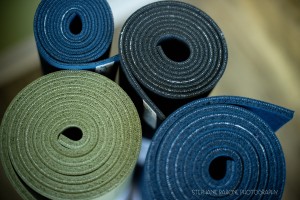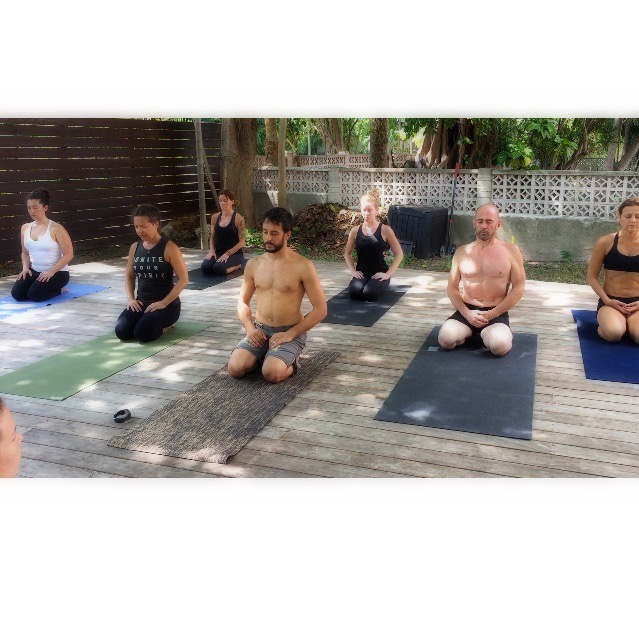How do I pick a yoga mat?
Recently, we asked for your suggestions, and one of our yogis asked for our insight in choosing a yoga mat. Here is our take:
While there are many options available, the vast majority of yoga mats work perfectly well for any style of yoga and personal preference plays a big role in ultimately choosing the mat that is right for you. That said, understanding the differences will help you select a mat that fits your personal needs because purchasing a good mat is going to cost you a few bucks.
Yoga Mat Thickness and Weight
Yoga mats range from super thin and compact travel styles that weigh a mere 2 lbs. to cushy quarter-inch beasts that weigh up to 7 lbs. If you’re not sure where to start, choose a mat that’s about 1/8-in. thick (0.125 in.), a pretty standard thickness.
These mats are excellent for those with a strong, flowing practice. They allow solid contact with the floor, which helps with stability during a variety of poses. Compared to thicker mats, they are also less likely to catch and get in your way when you flow from pose to pose.
If your yoga plans include air travel, look for a travel mat that’s specifically designed for portability. Travel mats are very thin and light and pack down smaller than traditional mats, so they’re easy to take along in your luggage. Keep in mind that you will sacrifice some cushioning with a travel mat.
Thicker mats provide extra cushioning and are best for more restorative or therapeutic practices. While more comfortable for forearm and kneeling poses, thicker mats can be more difficult to balance on during standing poses.
At the studio, we carry Jade mats. We have a few in the studio for yogis to borrow for practice. We definitely recommend giving one a spin at your next class before deciding which one is right for you.
Yoga Mat Materials and Durability
Generally, thicker mats last longer than thinner mats. That said, mat durability is also related to the material the mat is made from.
PVC is a plastic-based material that is highly durable, easy to clean and offers excellent floor grip. However, PVC mats are non-absorbent and can become slippery when you sweat heavily. PVC is latex-free, a benefit to those with latex allergies, however, it is not biodegradable or as environmentally friendly as other options. Yogis with latex allergies need to pay extra attention to what the mat is made from, coated with, etc.
TPE (thermoplastic elastomer) is a man-made blend, usually of plastic and rubber polymers. TPE mats may be more environmentally friendly than PVC, and some are fully recyclable. TPE mats are generally less durable than PVC mats of the same thickness, but still deliver good traction.
Eco / natural mats come from a variety of sources, including natural rubber, organic cotton, and jute. Compared to other options, eco mats are slightly less grippy on the floor, but their natural texture provides traction for your body. Eco mats lack the decade-long durability of PVC, yet they top the list if sustainability is your priority. Jade mats are eco-friendly as they are made with a renewable, sustainable resource – natural rubber, tapped from rubber trees. Jade mats contain no PVC or other synthetic rubbers. Perhaps most importantly, Jade yoga mats are made in the United States in compliance with all US environmental and labor laws. Finally, through its partnership with Trees for the Future, JadeYoga plants a tree for every yoga mat you buy. Bonus – Jade is headquarter right in our backyard outside Philadelphia, so we get to support a local business.
You will also note that we have Lululemon mat’s in the studio. This is our other go to brand. Lulu’s mat’s have a sticky surface as opposed to Jade’s textured surface. This is definitely a matter of preference. Some yogis find the sticky surface to be helpful, while others find it to be a barrier in their practice. We have both Lulu and Jade mat’s in the studio for you to try.
This month, the studio is running a special on Jade Mats and Manduka Towels. Buy a mat and a towel and save 20%. See studio for details!






